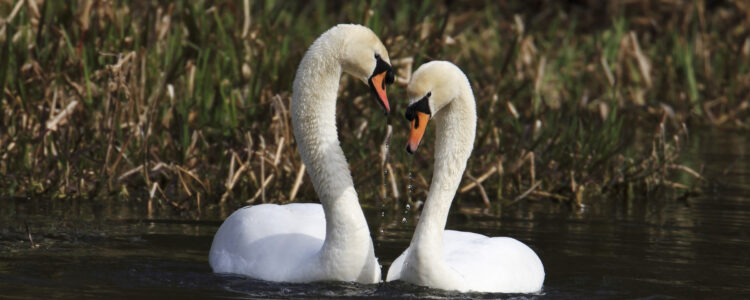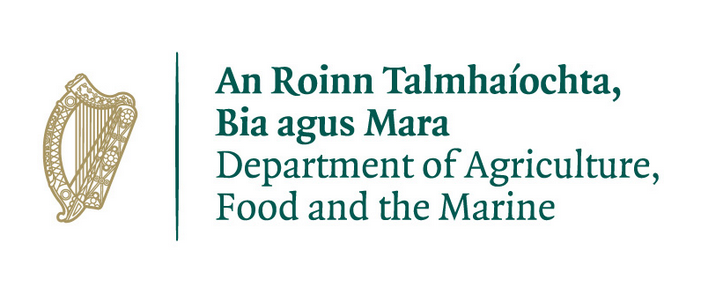
Waterbirds
Adult bird > Common conditions > Waterbirds
Ducks
DISEASES – Ducks
Duck Viral enteritis (Duck plague) – a herpesvirus
Clinical signs – bleeding from orifices, bloody diarrhoea, excessive thirst, difficult breathing
Diagnosis – clinical signs, mortality of muscovy ducks, PM
Treatment – vaccine
Comments – only ducks, especially muscovy ducks, waterborne so remove any unaffected ducks
TRAUMA – Ducks
Fishing tackle
Clinical signs – halitosis, emaciation, occasionally nylon line protruding
Diagnostics – clinical signs, radiograph
Treatment – Do not cut any protruding fishing line, needed for extraction.
X-ray to locate hook, if no hook check for any entanglement in tongue. Gavage 20ml liquid paraffin into oesophagus and gently pull line out
If hook found on x-ray, mark spot on length of stomach tubing, lubricate tube and feed it down over the protruding fishing line until it snags on the hook, gently push out the snagged hook then, keeping the line taught inside the tube, carefully withdraw both line and tube
Alternatively hook can be surgically removed by entering the side of the oesophagus. Note major jugular vein. Hook can sometimes be located by strong magnet
Comments – mainly water birds, swans, ducks, geese
Mating
Clinical signs – exhaustion, bald patch at the back of the head
Diagnosis – bald patch at the back of the head, living in area with many drakes
Treatment – supportive care
Comments – release in area with fewer drakes
Road traffic accidents
Clinical signs –
Diagnosis – radiography
Treatment –depending on wounds sustained
Comments – mainly found dead
Fractures
Clinical signs – broken leg, wing, beak
Diagnosis – radiography
Treatment – ‘colomboclip’ plastic cast, or other general fracture repair techniques
Comments – ducks cannot survive without lower beak or without a leg but manage well in captivity with one wing
PARASITES – Ducks
Gizzard and proventricular worms
Clinical signs – anorexia, diarrhoea, emaciation, lethargy
Diagnostics – faecal sample
Treatment – mebendazole powder or ivermectin or 5 days fenbendazole
OTHER – Ducks
Botulism – due to bacteria Clostridium botulinum which produces toxin
Clinical signs – flaccid paralysis of legs, excessive salivation, shallow irregular heartbeat and depressed breathing. Possibly low temp, 36.5–37.5˚C, and projectile non smelly diarrhoea
Diagnostics – history; air temp over 23˚C, low water levels
Treatment – fluids. Gavage with antitoxin (see Adult Birds Drugs & Dosages table). After 24hrs start to gavage with liquid food e.g. Poly-Aid or Complan. Continue until the bird is feeding for itself again
Comments – mainly water birds and gulls. Botulism very toxic, possibly only 50% success rate
Inappropriate location
Clinical signs – duck family in inappropriate location
Diagnosis – trying to bring family to water after nesting away from the water
Treatment –‘herd’ the family to water
Comments – easier to herd than capture and transport
Orphan
Clinical signs – alone, high pitched peeping call, exhaustion
Diagnosis – definitely alone
Treatment – needs to be rescued, see care of Baby birds section
Comments – first read to intervene or not – Baby birds section
Duck Moult (Eclipse)
Clinical signs – total lack of wing feathers
Diagnosis – clinical signs, between July and Oct
Treatment –only necessary if injury sustained due to inability to fly during eclipse
Comments – only ducks moult all wing feathers simultaneously, other birds moult 2 feathers at a time. Can happen up to three times a year
Oiled
Clinical signs – hypothermia, loss of waterproofing, toxicity from ingesting oil coating the feathers
Diagnosis – clinical signs
Treatment – refer to Irish Seal Sanctuary for treatment – call 01 8354370 immediately
Comments – inland ducks more robust than seaducks. Stabilise before washing
Swans
DISEASES – Swans
Bumblefoot (bacterial infection)
Clinical signs – puss filled foot abscess
Diagnosis – clinical signs, history of time spent standing on hard surfaces, bacterial swab
Treatment – debride and clean necrotic tissue using dermisol. Enrofloxacin antibiotic
Comments – mainly occurs in rehab. Prevent with suitable padded substrate e.g. mats, artificial turf. No access onto water until healed
Botulism – due to bacteria Clostridium botulinum which produces toxin
Clinical signs – flaccid paralysis of legs, excessive salivation, shallow irregular heartbeat and depressed breathing. Possibly low temp, 36.5–37.5˚C, and projectile non smelly diarrhoea
Diagnostics – history; air temp over 23˚C, low water levels
Treatment – fluids. Gavage with antitoxin (see Adult Birds Drugs & Dosages table). After 24hrs start to gavage with liquid food e.g. Poly-Aid or Complan. Continue until the bird is feeding for itself again
Comments – mainly water birds and gulls. Botulism very toxic, possibly only 50% success rate
Aspergillosis – fungal infection
Clinical signs – weight loss, emaciation, wheezing, open mouthed breathing, fluffed up, moist rales
Diagnostics – haematology may suggest chronic infection, radiography may show opacities in the airsacs, fungal plaques seen on endoscopy
Treatment –itraconazole +/- nebulisation with clotrimazole or F10 disinfectant
Comments – mainly water birds, sea birds, birds of prey, pigeons.
Clinical signs often appear too late so prophylactic treatment of high risk species recommended.
Often triggered by stress of captivity, especially when debilitated.
NEVER use straw or hay for bedding.
TRAUMA – Swans
Lead poisoning – ingestion of lead fishing weights or shotgun pellets for grit
Clinical signs – emaciation, anaemia, muscle weakness, bright green droppings ‘limber neck’ in swans – lower part of the swan’s neck lies across its back, and the gizzard muscle stops working resulting in unprocessed food collecting in the oesophagus and proventriculus
Diagnostics – blood analysis, but healthy swans can have naturally high lead readings. Radiographs of gizzard and clinical signs
Treatment – 2ml vitamin B12, SC into the thigh
1 Litre Hartmann’s with 5ml Sodium calcium edentate and 10ml Duphalyte. Maintain for 48hrs. (IV fluids via medial tarsal vein)
4 days after admittance a daily injection of 1.5ml Sodium calcium edentate mixed with 1ml water until appetite returns.
Encourage extra intake of grit to evacuate metals
Comments – mainly water birds, sometimes birds of prey, covids and pigeons. Bird will die without treatment
Swans may display signs of lead poisoning during extreme cold weather and females during breeding season. Generally remedied by single injection of 1.5ml Sodium calcium edentate mixed with 1ml water
Surgery not to be undertaken lightly, ONLY if large plumb weight or sinker lodged in gizzard. Remove via proventriculus
Lead shot or pellets elsewhere in bird’s body not considered a lead poisoning hazard
Fishing tackle
Clinical signs – halitosis, emaciation, occasionally nylon line protruding
Diagnostics – clinical signs, radiography
Treatment – Do not cut any protruding fishing line, may be needed for extraction
Radiograph to locate hook, if no hook check for any entanglement in tongue. Gavage 20ml liquid paraffin into oesophagus and gently pull line out
If hook found on x-ray, mark spot on length of stomach tubing, lubricate tube and feed it down over the protruding fishing line until it snags on the hook, gently push out the snagged hook then, keeping the line taught inside the tube, carefully withdraw both line and tube
Alternatively hook can be surgically removed by entering the side of the oesophagus. Note major jugular vein. Hook can sometimes be located by strong magnet
Comments – mainly water birds, swans, ducks, geese
Blocked oesophagus
Clinical signs – swelling in the neck, bad smell from beak, emaciation
Diagnosis – radiography, barium sulphate, endoscopy
Treatment –anaesthetic then stomach tube inserted to blockage, warm water pumped to loosen blockage, or surgical removal
Comments – stabilise with fluids initially. Prevent swan in rehab gorging on corn, feed soluble duck/chicken pellets
Power lines
Clinical signs – fractures, lacerations, burns to neck, face, wings
Diagnosis – clinical signs, history
Treatment – symptomatic, watch for necrosis
Comments – monitor for five days for evidence of electrocution
Crash Landing
Clinical signs – fractures, abrasions
Diagnosis – location found
Treatment –symptomatic
Comments – mainly fly off before rescued. Especially swans reported in fields – simply grazing
PARASITES – Swans
Myiasis – maggot infestation
Clinical signs – infestation in open wounds or orifices
Diagnosis – clinical signs
Treatment – flush with water, manually remove, ivermectin
Comments – many organophosphates are toxic to birds
VETERINARY CONSIDERATIONS – Swans
Admission
IV drip on arrival via medial tarsal vein, 22G catheter/21G butterfly set
Amoxycillin
Vit B12 for appetite enhancer
Check and physically remove any leeches in nostrils, eyes, choana
Radiographs to check for fishing tackle, sedation unnecessary, 3 x DV views – gizzard to head
Geese and other waterbirds
DISEASES
Geese – mainly only see botulism (see SWAN section above)
Greebes – use itraconazole prophylactically for migratory grebes (prevent aspergillosis)
TRAUMA
Geese – mainly fishing tackle, gunshot and power lines, (see SWAN section above)
Moorhens and coots – fishing tackle
Moorhens – road accidents; fractured tibiotarsus. Can’t cope with only one leg
Greebes – fishing tackle or unusual location – release in suitable habitat
Herons – fishing tackle, pond netting entanglement or starvation
Herons – airgun wounds, fractured long bones – legs and wings
